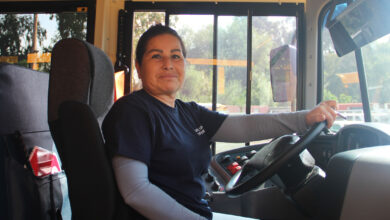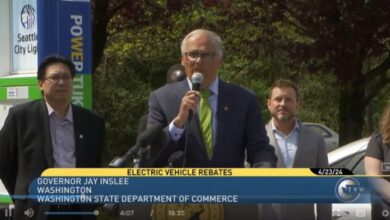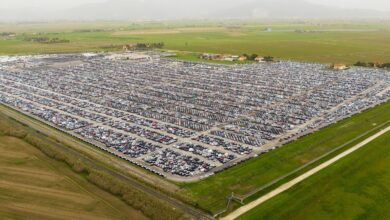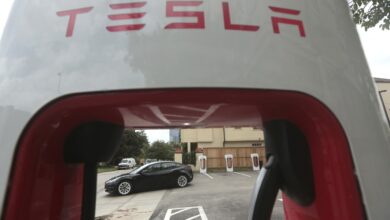How charging rivals plan to thrive on Tesla’s chaos
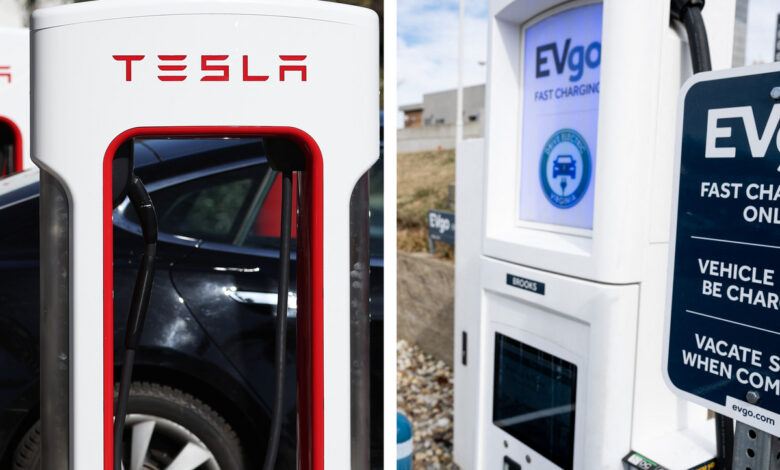
When Tesla CEO Elon Musk laid off the company’s entire electric vehicle charging team last month, his long game seemed unclear. Is the plan for Tesla to downsize its formidable Supercharger network — or merely try to do more with less?
Tesla’s charging competitors aren’t waiting to find out. They are taking advantage of the tumult, hiring Tesla’s jilted employees, moving in on its real estate and even tagging its dominant charging network with a sour new label: undependable.
Sara Rafalson, a vice president at charging provider EVgo, said the confusion creates an opening for her company to win over some site hosts that had previously promised their parking lot to Tesla’s Superchargers but “who might want a more reliable partner.”
The uncertainty extends to federal aid and who will win it. Tesla has been extraordinarily successful at winning awards to build out a national highway charging network by making them an extension of its already formidable system of Supercharger stations, which the company started in 2012. Now, however, Tesla’s participation in the federally funded system is in question.
The irony is that it — until now — it was not Tesla but every other charging operator that faced accusations of unreliability.
Tesla’s charging stations have been by far the most reliable, in the sense of working properly when a driver plugs in. Meanwhile, competitors have been dogged by glitches that have made road-trip charging a dicey experience and contributed to the slowing growth of EV sales.
Tesla’s unreliability is of a different sort. When Musk executed his mass layoffs in charging, the phone calls that contractors and site hosts made to their contacts at Tesla went unanswered. Emails bounced. In the silence disappeared the confidence that Tesla could be counted on.
This new void didn’t go unnoticed by other companies seeking to expand their networks. That created an opening for others to step in.
“It does present an awesome opportunity for other charging operators like us to fill in the gap,” said David Jankowsky, the CEO of Francis Energy, a charging firm that has been neck-in-neck with Tesla as a winner of federal bids.
Tesla did not respond to a request for comment on this story.
Up for grabs
This Tesla vacuum has occurred as other players in the charging system are making concrete plans to open new charging stations by the dozens and hundreds. They are newly aggressive and have more resources to enable them to surge forward.
For example, EnviroSpark Energy Solutions, an Atlanta-based charging provider, has in the last month hired a dozen Tesla castaways. The company got its start installing charging stations for Tesla, but diversified into constructing its own network — an effort aided by $15 million of funding it landed days after Tesla’s layoffs.
“Those [Tesla] people we were talking to, they’re now on our staff,” said EnviroSpark CEO Aaron Luque.
Other companies are making similar moves. Last week, Revel, a New York City charging provider, said it had hired Edward Noseworthy, a Tesla veteran, to lead its design and construction team.
Others aren’t far behind. “We’ve had a lot of conversations with talent already,” said Rafalson of EVgo.
For companies squarely in Tesla’s charging wheelhouse — building and operating fast roadway stations — there is space to be grabbed. As an example, BP Pulse, the charging arm of oil giant BP, said in a statement that “we are looking to acquire real estate to scale our network, which is a heightened focus following the recent Tesla announcement.”
That sense of possibility colors gas stations and truck stops, which are standing up charging operations.
In the words of Andy Bennett, who runs a charging-software arm of Vontier, a maker of gasoline pumps, the sentiment he’s hearing from his clients about Tesla is “great, those guys are kind of out of the way.”
Yet another chance charging networks have is to swoop in and win Tesla’s portion of the $5 billion the federal government is spending to build out a highway EV charging network.
The bipartisan infrastructure law that passed Congress in 2021 includes the so-called National Electric Vehicle Infrastructure program, or NEVI. Its first goal is to build a minimum safety net for EV drivers: a series of public fast-charging stations at 50-mile intervals along major highways.
“Companies are certainly giddy with the possibility of picking up some NEVI site awards for which Tesla may decide not to proceed, or the chance of being more competitive for future awards with Tesla potentially out of the picture,” wrote Loren McDonald, CEO of EVAdoption, an EV charging data analytics firm.
It seems that Tesla is still in the running for federal funds. On Tuesday, the Wisconsin Department of Transportation forwarded a spreadsheet to EVAdoption that said two of its 53 new NEVI locations would be built by Tesla, while Kentucky appeared poised to award Tesla one location, according to McDonald.
‘I don’t like this blip’
However, a foggy outlook for Tesla presents downsides for other charging providers and for the effort to build out a national network.
Because Teslas are still so synonymous with EVs — the company accounted for 51 percent of U.S. EV sales in the first quarter, according to Cox Automotive — its troubles can create doubt among potential EV buyers that the technology is here to stay.
“I don’t like this blip on the radar that there’s trouble here,” said Jeffrey Kinsey, the vice president of engineering at EverCharge, a company that builds charging networks for fleets and apartment buildings.
A pullback by Tesla could also diminish the size of the future charging network. That’s because its Supercharger system has been in nearly constant growth mode since its inception. This constancy had made Superchargers a basis for projections of the entire system’s size — until now.
A choice by Musk to slow this year’s torrid growth of the Supercharger network could mean “potentially 10,000 to 35,000 fewer” fast-charging ports in the U.S. by 2030, according to an email from McDonald.
That range could put the country short of a projection by the National Renewable Energy Laboratory that the country will need 182,000 fast-charging stations by that year.
“It won’t likely be catastrophic,” he added. “But fundamentally, the industry needs companies/networks like Ionna, Mercedes-Benz, EVgo, Walmart, to step up to the plate.”
A changing role
Players in the charging space have also rapidly evolved to change their view of Tesla.
In late April, Musk laid off most or all of Tesla’s charging team — about 500 people — as part of a cost-cutting campaign. Earlier that month, the EV maker reported a rare drop in interest from customers. Its first-quarter deliveries dropped more than 8 percent from a year earlier.
The indiscriminate nature of the cuts caused confusion and alarm because Superchargers are the country’s largest and most high-profile charging network. They underlie the EV launches of other automakers, who are banking on their drivers using the Tesla network and are integrating Tesla’s charging standard into their vehicles.
Musk has mostly left the uproar unaddressed. It is unclear how he sees the role of Tesla in America’s charging system — or how much he cares about other people’s perceptions.
Since the layoffs, Tesla has hired a few charging experts back. And two weeks after the layoffs, Musk took to X — the social network he owns — and posted that Tesla would spend over $500 million “expanding our Supercharger network to create thousands of NEW chargers this year.”
It does appear that, in at least one instance, Tesla intends to at least finish building the stations that were in its pipeline.
EnviroSpark had been under contract to Tesla to build 26 low-power stations, intended for overnight use at hotels and residences, said Luque, the company’s CEO. Those projects have been on hold for a month.
Last Wednesday, Tesla finally sent word. “The directive was that anything that is currently under construction, finish it out,” Luque said.
Executives with other charging networks now say they find Musk’s decision unsurprising and even sensible.
“Obviously, Elon Musk ran the numbers and said, ‘Hey, this isn’t worth it,’” said Kinsey of EverCharge.
It is “essentially a construction job, not at all core to what they do,” said Desmond Wheatley, the CEO of Beam Global, a San Diego company that makes off-grid solar charging stations.
Michael Farkas, a longtime charging executive who used to be with Blink Charging, suggested that Musk “is restructuring the division rather than eliminating it.”
What may undergird Tesla’s thinking is that the charging system — Tesla’s and everyone else’s — is undergoing a fundamental transition.
This year, for the first time, EVs not made by Tesla are starting to refill on the Supercharger network, which previously was only for Teslas. Starting next year, automakers’ new EVs will have Tesla’s charging system built in. The line between Tesla’s network and the larger network is starting to blur.
At some point in the future, “The driver is not going to know or care which station it is using, or even what network,” said Jankowsky of Francis Energy.
